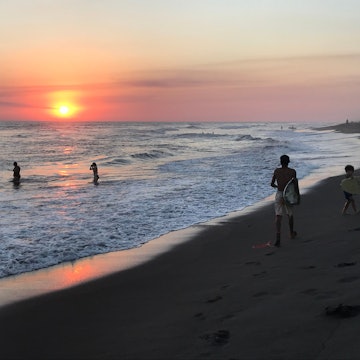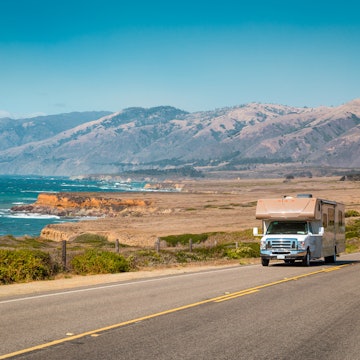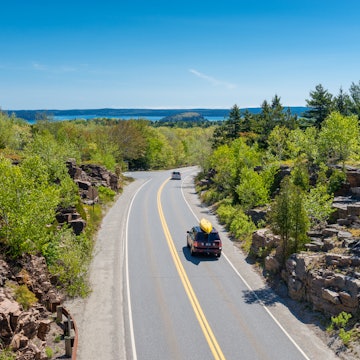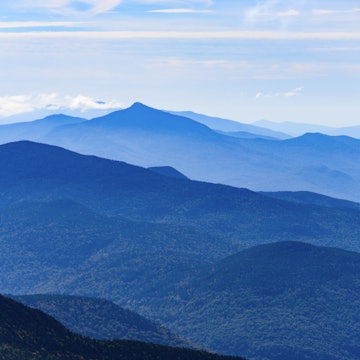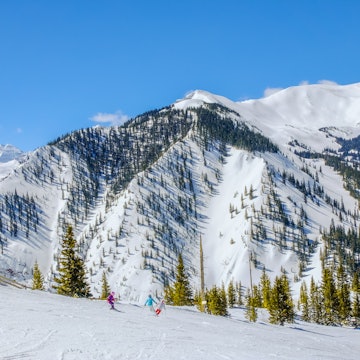

Admiring the ferocious waves of El Tunco from afar © Brian Healy
We wanted to take a short getaway to somewhere Spanish-speaking, relatively close, warm (but not too warm!), and under the radar. Why not El Salvador? thought my husband Dan and I.
Having spent a sensational week in neighboring Guatemala in 2020, we were intrigued. Major (and not uncontroversial) policy changes under Nayib Bukele, El Salvador’s young and wildly popular president, have lately changed things, sharply increasing public safety and opening up previously inaccessible parts of the country – and after reading more about its highland towns, volcanoes and fabled beaches (which made the place a 2023 Lonely Planet Best in Travel pick), we set off to discover the Massachusetts-sized country in six packed days.
How did you get around? How much did it cost?
We rented a car at the international airport for $65 per day – the best decision we made. The roads are in excellent condition with well-maintained highways and the occasional dual carriageway connecting towns all over, including in the mountains. We loved driving under a canopy of red flame-tree blossoms, and through the tunnels along the coastal road, passing under hills that plunge toward the crashing surf below.
After extensive research, the quality of the roads had worried us, and we considered the adventure of getting from place to place on public buses. Yet what we read was wrong: even in remote areas, the pavement was smooth, the potholes few. (One exception was a one-lane ribbon of switchbacks Google Maps suggested as a “shortcut” – that was a bit harrowing.) We drove almost 350 miles in six days. And it was a breeze.

What was the most under-the-radar activity you enjoyed?
Two nights in Suchitoto, a provincial town that has El Salvador’s best collection of colonial architecture. There’s not much going on here – and that’s the whole appeal of the place. Sitting in the main square with an ice cream, watching children play and elderly residents gossip, gave us a wonderful taste of small-town Salvadoran life. We also loved the people-watching at the Puerto San Juan pavilion, on Lake Suchitlán just outside of town, where families gather for large Sunday lunches over fried fish and beer.

What is the one thing that you did not expect?
The Qute, an auto import from India that has replaced El Salvador’s fleet of three-wheeled tuk-tuks in small countryside towns. These adorably tiny four-door vehicles look just like the car emoji (🚗) – and somehow fit four passengers inside. Locals use them as taxis along narrow, hilly village roads.

Favorite activity from the trip?
Our three-hour climb to the rim of Santa Ana volcano, one of three craters in gorgeous Parque Nacional Los Volcanes. For $30, we hired a guide to take us to the crater rim (for ecological and economic-development reasons, this is mandatory; don’t assume, as we did, that the admission gate in the parking lot is a scam). About an hour in, the jungle ended and we scrambled up a rocky path, the views of Lake Coatepeque and the countryside below us growing ever broader. The payoff was a view straight down into the sea-green crater lake, bright and bubbling thanks to volcanic emanations from deep inside the Earth.
Cost of a beer? (Local one to try?)
A cold Suprema lager will run you all of $1.25 (El Salvador uses the US dollar as currency).

What was the most touristy thing you did?
Driving the Ruta de las Flores, through the western highlands. The air stayed cool as the altitude increased, with clouds hugging slopes covered with forests and coffee plantations. The tidy hilltop towns of Juayúa, Apaneca and Ataco (where we stayed) have a sleepy charm that really should draw more visitors. We saw very few other foreigners during this leg of the trip.

We had also decided to spend two nights at El Tunco, a haven for surfers that’s probably the country’s best-known draw. The shore was indeed stunning, with ferocious waves that produced a strange clunking sound as they agitated the potato-size rocks on the beach – no swimming here. Yet ultimately the scene was a bit too much surf-and-party for us. So we cut our stay short by adding a stop in San Salvador to the trip.

Best tip for someone who wants to plan the same trip?
Don’t skip San Salvador.
The spruced-up Centro Historico has street life galore, and a sprawling market where produce vendors compete for customers with bullhorns and loud music. We found the crypt of the cathedral especially moving: Óscar Romero, the outspoken bishop who was murdered by paramilitary gangs and later made a Catholic saint, is entombed here. We had a fabulous dinner at 1893, a chic indoor-outdoor restaurant that takes an elevated, international approach.
The one attraction you absolutely cannot miss in San Salvador is the spectacular El Rosario church. From the outside, the 1971 structure resembles a concrete bunker; inside, light is refracted through chunks of colored glass, flooding the sanctuary with heavenly prisms of rainbow light.

What’s your favorite photo from the trip and where was it taken?
We emerged from El Rosario into Plaza Libertad, where a full-on midday dance party was happening. I was astonished at the participants’ vigor as they shimmied to live music in the scorching sun, with people of all ages, body types and dancing abilities joyously joining in. I’ll never forget the exuberance of this scene – which matched my own delight in getting to know this Central American country.






